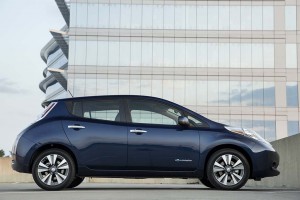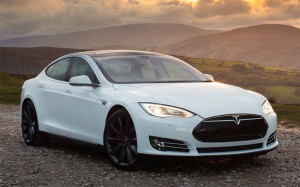
The Nissan Leaf is currently the world's best-selling battery-electric vehicle and there may be more going to New Zealand.
The government of New Zealand has announced plans to double the number of electric vehicles in the country every year in an ambitious and wide-ranging package of measures to increase the uptake of EVs, according to an article in the International Transport Society International newsletter.
The ITS report said the package includes extending the road user charges exemption on light electric vehicles until they make up 2% of the light vehicle fleet and a new road user charges exemption for heavy electric vehicles until they make up two percent of the heavy vehicle fleet.
The population of New Zealand is 4.4 million people, or roughly equal to the population of the Detroit metropolitan area, and the market for new vehicles is tiny by global standards. Slightly more than 71,000 vehicles were sold in 2015, according to the New Zealand Ministry of Transport, and the market is divided among more than 40 brands, ranging from Alfa Romeo to Subaru.
New Zealand is prepared to spend $4 million to encourage and support innovative low-emission vehicle projects; work across Government and private sector to investigate the bulk purchase of electric vehicles.
Government agencies helping with the development and roll-out of public charging infrastructure including providing information and guidance; and allowing electric vehicles in bus lanes and high-occupancy vehicle lanes on the State Highway network and local roads.
(UAW eyes Tesla for organization, Williams says. For more, Click Here.)
“It’s clear that electric vehicles are the future. A move from petrol and diesel to low emission transport is a natural evolution, and it is our aim to encourage that switch sooner, rather than later,” said Transport Minister Simon Bridges.
“The benefits of increasing uptake of electric vehicles are far-reaching. They’re cheaper to run than petrol or diesel vehicles, they’re powered by our abundant renewable electricity supply, and they’ll reduce the amount of emissions that come from the country’s vehicle fleet.”
The package is intended to tackle and remove barriers that have until now prevented households and business from choosing electric. Current barriers include the limited selection of models available; a lack of widespread public charging infrastructure; and lack of awareness about electric vehicles.
(Click Here to see why Tesla is looking to raise $2 billion with a new stock offering.)
“The Government can’t tackle these barriers alone. That’s why we’ve been working closely with the private sector and local government over the last year on what measures we can take that will have the greatest impact,” said Bridges.
More than 80% of New Zealand’s electricity is produced from renewable sources such as hydro and geothermal power and increasingly by turbines driven by the wind.
(Tesla still in red, but losses narrow during Q1. Click Here for the latest.)
The Ministry of Transport hopes to have a total of 64,000 EVs on the road by 2021. New Zealand is latest in a growing list of countries, including China, Norway and the Netherlands that have adopted broad policies designed to encourage wider use of electric vehicle.

